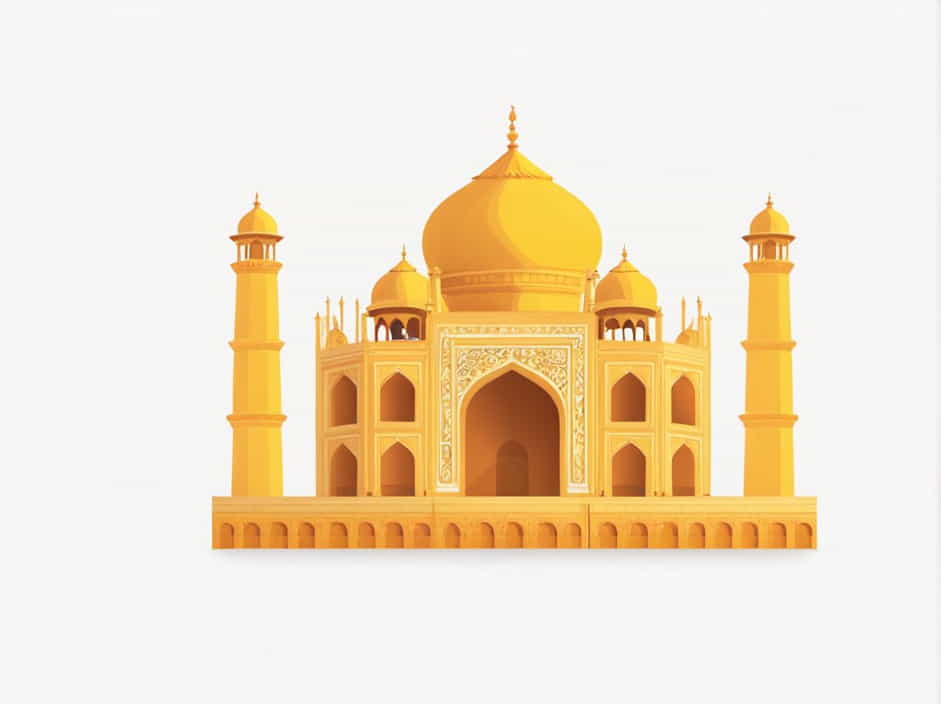The Taj Mahal, one of the most famous monuments in the world, is known for its stunning white marble. However, in recent years, its surface has developed a yellowish tint, raising concerns among historians, environmentalists, and conservationists.
This discoloration is not just an aesthetic issue—it is a sign of environmental pollution and degradation. In this topic, we will explore the causes of the Taj Mahal’s yellowness, its effects, and the measures being taken to preserve its beauty.
1. Why Is the Taj Mahal Turning Yellow?
Several factors contribute to the yellowing of the Taj Mahal’s white marble. The primary reasons include air pollution, acid rain, and biological growth.
1.1 Air Pollution from Industries and Vehicles
- The Taj Mahal is located in Agra, India, a city with high levels of industrial emissions and vehicular pollution.
- Factories, especially those burning coal and fossil fuels, release sulfur dioxide (SO₂), nitrogen oxides (NOₓ), and particulate matter into the air.
- These pollutants settle on the marble, causing yellow stains and dullness.
1.2 Acid Rain and Its Impact
- Acid rain forms when sulfur dioxide and nitrogen oxides mix with water vapor in the atmosphere.
- When it falls on the Taj Mahal, it reacts with the calcium carbonate in the marble, leading to erosion and discoloration.
- Over time, this weakens the structure and makes cleaning more difficult.
1.3 Dust and Dirt Accumulation
- Agra has a dry and dusty climate, which results in layers of dust settling on the monument.
- This dust absorbs pollutants from the air, further darkening the surface.
1.4 Growth of Microorganisms
- Algae, fungi, and bacteria thrive in the humid environment near the Yamuna River, which flows beside the Taj Mahal.
- These biological elements release organic acids that stain the marble yellow or even green.
2. Effects of the Taj Mahal’s Yellowing
The gradual discoloration of the Taj Mahal is not just a cosmetic issue. It has serious cultural, historical, and economic consequences.
2.1 Damage to Cultural Heritage
- The Taj Mahal is a UNESCO World Heritage Site and a symbol of India’s rich history.
- If the yellowing continues, the monument could lose its original beauty, affecting its historical significance.
2.2 Impact on Tourism
- The Taj Mahal attracts millions of tourists every year.
- A discolored and damaged monument could reduce tourism revenue and negatively affect local businesses.
2.3 Structural Weakening
- Acid rain and pollution are eroding the marble, making the structure more fragile over time.
- If not addressed, this could lead to irreversible damage.
3. Measures Taken to Prevent Further Discoloration
Recognizing the urgency of the problem, the Indian government and conservationists have implemented several steps to restore and protect the Taj Mahal.
3.1 Pollution Control Measures
- The Taj Trapezium Zone (TTZ) was established to limit industrial emissions around the monument.
- Factories near the Taj Mahal have been shut down or moved to reduce pollution.
- Vehicle restrictions have been imposed to limit exhaust emissions. Only electric or non-polluting vehicles are allowed near the monument.
3.2 Regular Cleaning and Maintenance
- The Archaeological Survey of India (ASI) conducts regular cleaning using “Multani Mitti” (Fuller’s Earth) to remove dirt and stains.
- This traditional clay treatment is a natural way to restore the marble’s whiteness without using harsh chemicals.
3.3 Plantation and Green Belt Development
- Trees and plants have been planted around the Taj Mahal to absorb pollutants and improve air quality.
- This green belt acts as a natural barrier against dust and industrial smoke.
3.4 Yamuna River Restoration
- The pollution and stagnation of the Yamuna River contribute to microorganism growth on the Taj Mahal.
- Efforts are being made to clean and restore the river to prevent further biological damage.
4. Can the Taj Mahal’s Whiteness Be Restored?
While conservation efforts have slowed down the yellowing, completely restoring the Taj Mahal’s original whiteness is a challenge.
4.1 Challenges in Restoration
- The continuous exposure to pollution means cleaning needs to be done regularly, which is expensive and time-consuming.
- Overuse of cleaning methods may weaken the marble over time.
4.2 Future Preservation Strategies
- Implementing stricter pollution controls in and around Agra.
- Promoting public awareness about the importance of environmental conservation.
- Using advanced restoration technologies to clean the monument without damaging the structure.
The yellowness of the Taj Mahal is a result of pollution, acid rain, dust, and biological growth. If left unchecked, it could cause severe damage to this architectural masterpiece.
Through strict pollution control, sustainable cleaning methods, and environmental conservation, efforts are being made to preserve the beauty of the Taj Mahal for future generations. However, continued action and global awareness are crucial to ensure this iconic monument remains a symbol of India’s cultural heritage for centuries to come.
